Changing Compounds Open Vistas For Smart Mixing, Upgraded Technologies
- By Sharad Matade
- April 17, 2025

The tyre industry is undergoing a profound transformation, driven by sustainability, digitalisation and material innovations. As manufacturers push the boundaries with high-silica compounds, recycled rubber and alternative materials like dandelion rubber, the mixing process faces increasing complexity. Traditional methods struggle to maintain efficiency, necessitating advanced technologies like HF Mixing Group’s Tandem mixing and smart solutions. With automation, and precision engineering, the industry is redefining efficiency and sustainability.
Tyres are a sheer example of impeccable chemical engineering. From passenger car radials (PCR) to off-the-road (OTR), these technical marvels can carry loads weighing tonnes even in the deadliest of roads. For centuries, they have been the backbone of logistics, transportation and more.
But making a tyre is not an easy task. It involves a tremendously meticulous process ranging from raw material selection to mixing compounds for deriving the exact formula that gives these rubber casings durability, elasticity and more.
As the global tyre industry undergoes a transition in every critical aspect, it also sees a change in compounds that go into mixtures. This in turn paves the way for upgradation in technologies.
According to HF Mixing Director of Product and Services, Nils Spier, “The growing use of silica in passenger tyres is reshaping the industry with specifications now reaching 100, 130 and even 180 parts per hundred rubber (PHR). Levels above 150 PHR have recently gained traction, particularly in the premium segment, where high-performance tyres demand lower rolling resistance and improved wet grip.”
On the other hand, he revealed to Tyre Trends that increasing silica content presents technical challenges. Standard single-mixer setups face limitations due to the need for adequate silanisation time. When more silica is added, the process becomes more complex and time-consuming. HF Mixing Group’s Tandem mixing technology addresses this by transferring the process from an upper to a lower mixer, preventing capacity losses and optimising mixing efficiency.
“Dispersion is another critical factor as silica’s inherent stickiness complicates processing. The upper mixer completes the dispersing task, utilising a geometry established in the industry for over 20 years. The latest-generation PES7 mixer builds on this, ensuring the same high-quality results. Once the compound moves to the lower mixer, further refinements occur. A specialised bottom mixer rotor TRC, developed to enhance cohesion and compacting, helps mitigate issues where certain components tend to crumble. Without this step, batches risk fragmenting into plates and uneven portions, complicating further processing. The Tandem mixer’s rotor system ensures that the full batch remains intact, facilitating smooth transfer onto a mill or twin-screw extruder,” he added.
In a nutshell, the Tandem mixing technology allows tyre manufacturers to accommodate higher silica content without compromising processing efficiency or final product quality.
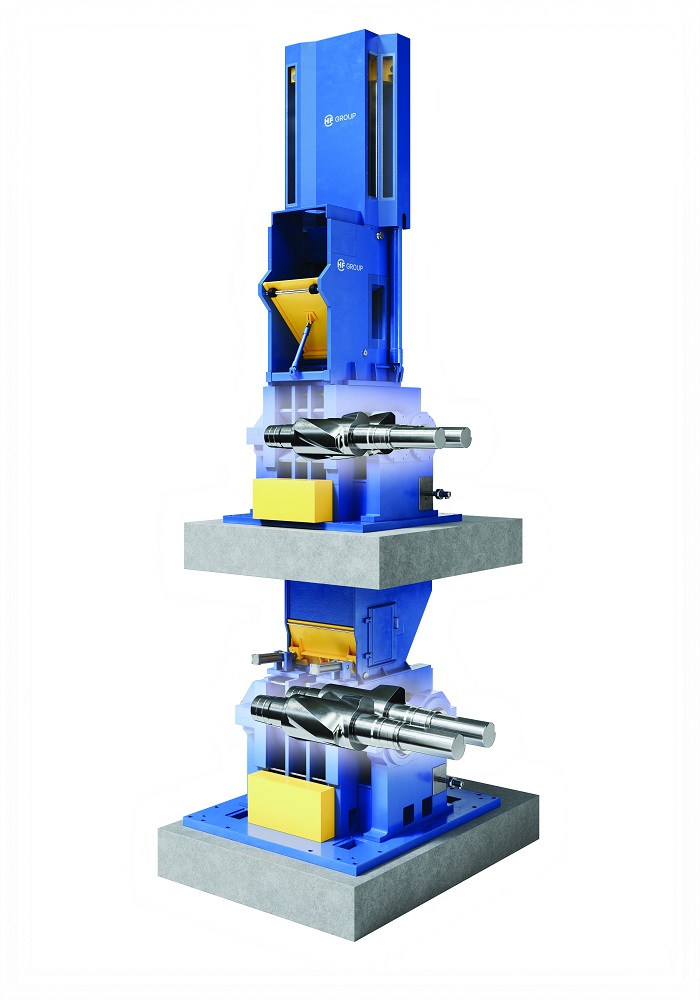
HF’s latest advancements in mixing technology are delivering notable efficiency improvements, particularly in intermeshing rotor systems. The PES7 rotor, introduced around two years ago, has now been successfully deployed at multiple customer sites, showing strong results in both new and retrofit applications. The rotor upgrade offers an increased mixer empty volume plus higher possible fill factors, resulting in a 10–15 percent increase in throughput without compromising cycle time or product quality.
UPGRADING MIXING TECHNOLOGY THROUGH SMART DIGITAL SOLUTIONS
According to Spier, “Tandem and the smart digital mixing solutions represent a holistic approach to optimising the mixing process. The smart final mixing solution is a software and service concept developed by HF, designed to work in close collaboration with customers. The process begins with defining the customer’s target recipe and process parameters, followed by calibration tests conducted on-site.”
Calibration tests involve capturing the fingerprint of the mix including rotor speed, drive data, temperature control unit settings and ram seating time. This data is then processed through the company’s proprietary algorithms and material models, which simulate various mixing scenarios to identify optimal process parameters.
The simulation models predict key variables such as batch temperature development at different rotor speeds and the impact of ram lift adjustments to improve compound aeration. This approach eliminates the need for extensive design of experiment, accelerating the optimisation process without compromising on productivity of the production equipment.
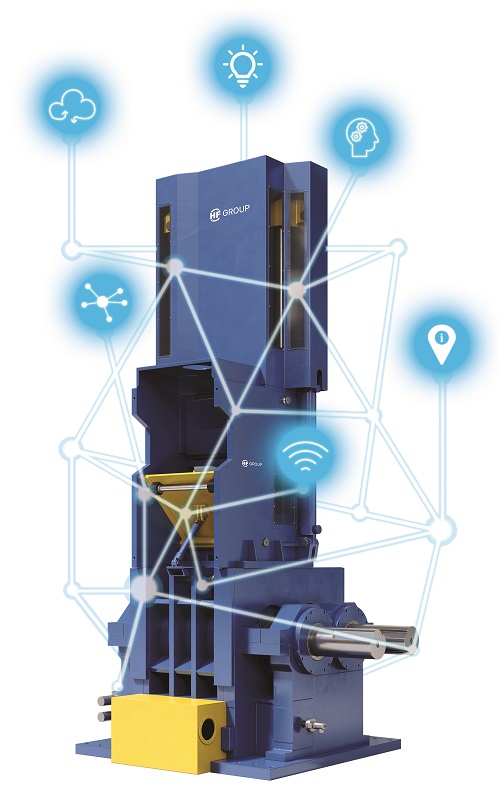 The smart mixing solution is specifically designed for HF mixers as the company has precise knowledge of the machine parameters, cooling surfaces and other mixer-specific properties. The validation trials conducted post-simulation have demonstrated cycle time reductions up to 20 percent, translating into significant efficiency gains for manufacturers.
The smart mixing solution is specifically designed for HF mixers as the company has precise knowledge of the machine parameters, cooling surfaces and other mixer-specific properties. The validation trials conducted post-simulation have demonstrated cycle time reductions up to 20 percent, translating into significant efficiency gains for manufacturers.
Moreover, the company’s smart mixing approach optimises key parameters to enhance energy efficiency and quality in the mixing process. Cycle time is a primary focus with proprietary algorithms minimising unnecessary processing steps while ensuring uniform distribution and dispersion of the curative package.
Rotor speed plays a crucial role as it must be adjusted at different phases of mixing. A higher speed may be beneficial in the initial dispersion stage, but excessive speed leads to rapid temperature increases, negatively affecting compound properties. The company’s models balance rotor speed, energy efficiency and temperature for optimal results.
Lastly, fill factor is essential for both quality and efficiency. Overfilling can result in uneven mixing and longer processing times, while underfilling reduces throughput and jeopardises batch quality. The company’s Smart Final Solution ensures that the fill factor is set to an ideal level for maximum quality and throughput.
TECHNOLOGICAL INCLUSIVITY
The company’s approach to smart mixing is currently data-driven and reliant on process specialists, but the role of artificial intelligence (AI) in this field is expected to grow. “While AI has the potential to make autonomous decisions and process adjustments in the future, we still integrate human expertise alongside digital tools to ensure process reliability. Factors such as installed downstream equipment, mixer conditions and on-site variations must be considered, which currently require operator input. However, we are already exploring AI-driven solutions such as predicting batch temperature, optimising carbon black incorporation and refining oil dispersion, which could eventually enhance process automation,” informed Spier.
While digitalisation is a key part of the company’s transformative roadmap, AI’s role is still in development. Instead of full AI automation, it employs advanced models and algorithms that run extensive simulations to optimise mixing conditions without compromising quality. These models provide real-time feedback on the best possible process adjustments, delivering improvements in efficiency, quality and consistency.
Alluding to whether older mixers installed 5 to 10 years ago can be retrofitted with recent upgrades, he noted, “There is a possibility of retrofitting smart solutions to enhance its capabilities. Rather than relying solely on AI, we offer in-line process monitoring, where historical mix data is used to establish a reference baseline with tolerance bands. This allows for real-time adjustments.”
The mixing process is fully automated with step-related control systems defining key parameters such as mixing time, specific energy input and rotor speed per step, batch temperature to ensure precision and consistency. Every mixing step can be supported by HF’s unique intelligent controller technology such as intelligent Ram control iRam, the HF constant temperature controller or iXSeal Dust Stop Lubrication Controller.
PROCESS ADAPTATION
Tyre makers are increasingly experimenting with alternative materials, such as recycled rubber and dandelion-derived compounds, which significantly impact the mixing process. Adjustments are necessary to maintain efficiency and quality, as non-traditional materials alter torque curves and require parameter modifications.
Moreover, different category of tyres requires different mixing processes due to variations in tread compound formulations. Passenger car tread compounds typically differ from OTR formulations, necessitating specific dispersion techniques to achieve the desired performance characteristics.
With that said, it is prudent that companies adapt to changing processes fuelled by market demand. “The company provides a range of rotor solutions to optimise these mixing processes. Tangential rotors are designed to enhance master batch dispersion, especially the NST rotor, ensuring uniformity in the compound. ZZ rotors are mainly used for final batch production, offering precision in mixing the final formulation. In addition, the ZZ rotor geometry has proven strong performance in Master Batch Silica Processing. Additionally, intermeshing rotors are employed to manage specialised compounds, providing better control over the mixing process for unique material requirements,” revealed Spier.
Furthermore, material innovations are significantly impacting the mixing process, requiring process adaptations to maintain efficiency and achieve consistent final results. The use of alternative materials such as recycled rubber or non-traditional sources like dandelion rubber, rCB and other recycled materials alters the torque curves during mixing. These changes necessitate adjustments to mixer parameters, ensuring optimal dispersion and processing without compromising product quality.
To support customers in navigating these challenges, HF’s process experts collaborate closely with them through the technical centre in Germany and worldwide operating process engineers. By testing new processes before full-scale industrialisation, the company helps identify and resolve potential issues in advance.
INDUSTRY SHIFTS
The shift towards premium tyres is shaping the European, Asian and North American markets differently. In Europe, manufacturers are increasingly focusing on premium and OTR tyres while scaling back production of 15–17-inch models and consolidating operations.
This shift is driving higher demand for advanced compounds and increased silica usage. However, capacity expansions remain limited with most investments directed towards equipment upgrades rather than new production facilities.
In Asia, particularly in India and China, greenfield projects are on the rise due to strong automotive demand. This expansion reflects the region’s growing role in the global tyre industry as manufacturers invest in new facilities to meet both domestic and export needs. North America, on the other hand, is seeing a mix of replacement investments and selective large-scale expansions with companies balancing modernisation efforts and strategic growth.
Beyond these key regions, North Africa, specifically Algeria, Morocco and Egypt, is emerging as a new manufacturing hub. This region is gaining traction in the global tyre industry, an area where it previously had little presence. With increasing investment and infrastructure development, North Africa is positioning itself as a competitive player in tyre production.
With many manufacturers shifting to smaller campaign to accommodate different tyre recipe, flexibility in the mixing process has become essential. HF’s automation system is designed to handle these challenges by allowing quick modifications to production plans.
Manufacturers can adjust torque, batch sizes and compound quantities without causing disruptions. Additionally, the manufacturing execution system ensures seamless execution, making even short production runs of 5 to 10 batches efficient and cost-effective.
MARKET EXPANSION
Besides Europe, Asian markets such as China and India remain key growth locations for the company. As manufacturers in these regions adopt new technologies to meet evolving industry standards, the demand for efficient and adaptable mixing solutions continues to rise.
“We continue to invest heavily in innovation and research and development to grow in the Asian market. Allocating three percent of our revenue to innovation and 4.5 percent to development, the company ensures that 35 percent of its projects focus on sustainability. By maintaining technology leadership, we deliver high-quality, high-functionality equipment that supports the growth of new and established manufacturers in the region,” informed Spier.
While HF is known for its high-precision machines used by top-tier tyre manufacturers, it also caters to tier 2 and tier 3 players. The company supplies to many smaller manufacturers.
On the context of sustainability, Spiers noted, “Sustainability is a core focus of our research and development strategy, aligning with the ambitious environmental targets set by tyre manufacturers worldwide. We integrate sustainability by developing energy-optimised mixers with efficient drive setups, introducing new hydraulic power units that significantly reduce power consumption and implementing incremental efficiency improvements such as enhanced heat management to extend machine longevity.”
Lastly, the company provides comprehensive service beyond commissioning, including operator training, process optimisation and trouble-shooting, round-the-clock support via ticket and hotline systems and fast-response local service teams across China, South-East Asia, India, North America, North Africa and Europe.
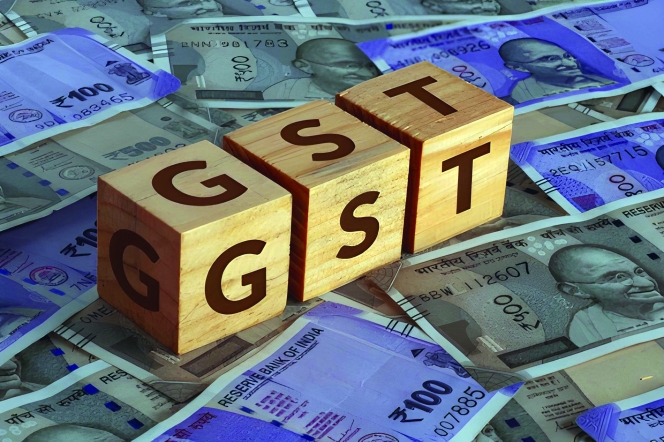
The rollout of GST 2.0 marks a defining moment in India’s economic journey – a reform that may well prove even more consequential than the original introduction of the Goods and Services Tax. Especially for a sector like tyres, the recent reduction in (GST) on tyres is far more than just a change in numbers. It is a transformative step that touches every wheel turning on India’s roads – from a farmer’s tractor to a trucker’s long-haul trailer and from a commuter’s scooter to a construction vehicle powering the nation’s infrastructure.
For years, tyres were taxed at 28 percent – the highest GST slab, clubbed with luxury and demerit goods. This categorisation never truly reflected the essential role tyres play in our everyday lives. Tyres are not a luxury. They are a fundamental enabler of mobility, supporting the movement of people and goods across cities, towns and villages. By bringing GST rates on tyres down to a more rational level, the government has addressed a long-standing anomaly and set the stage for widespread benefits across the economy.
The most visible impact of this move will be felt on the ground – literally. Lower GST means more affordable tyres for all users. Especially for transporters and fleet operators, tyres account for a significant chunk of vehicle running costs. A reduction in tax translates into lower replacement costs, freeing up working capital and improving operational margins. Farmers, small traders, delivery personnel, service providers, transporters – every segment that relies on mobility will feel this relief.
India has been working hard to bring down logistics costs, which are believed to be about 13–14 percent of GDP – much higher than global benchmarks. Tyres have a direct bearing on vehicle operating efficiency, fuel consumption and maintenance schedules. When tyres become more affordable, operators can replace tyres on time, and run vehicles more efficiently.
This naturally leads to lower logistics costs. Reduced logistics costs ripple across the value chain, helping industries move goods faster and at lower cost. This aligns perfectly with India’s ambition to become a more globally competitive manufacturing and trading hub.
Tyre industry’s story is not just urban – it’s deeply rural as well. Tractor tyres, power tiller tyres and tyres for animal-drawn vehicles are integral to the agricultural economy. A reduction in GST brings meaningful relief to farmers and small cultivators who rely on these tyres for their daily operations. By easing this cost, the government has extended direct support to rural mobility and agricultural productivity – an often underappreciated but critical outcome of this reform.
One of the most powerful yet often overlooked impacts of this decision lies in road safety. Worn-out tyres are a major cause of road accidents, particularly on highways. High replacement costs often lead to tyres being used well past their safe life.
With lower GST making new tyres more accessible, both individual motorists and commercial fleet owners are more likely to replace tyres on time, keeping vehicles safer and reducing accident risks. This complements the government’s broader road safety agenda, making highways not just faster but safer for everyone.
For the Indian tyre industry, which is one of the largest in the world, this reform is a game changer. It creates a more balanced tax structure, supports better cash flow, improves compliance and strengthens the competitiveness of domestic manufacturers. It will also encourage investment and capacity expansion, enabling the industry to serve growing domestic demand and tap export opportunities more effectively.
The GST reduction on tyres is a strategic, forward-looking policy decision that will benefit the entire mobility ecosystem. It acknowledges the essential role tyres play – not just as a product, but as a critical enabler of transportation, logistics, rural livelihoods and road safety.
As this reform takes root, its positive impact will be felt by consumers, businesses, farmers and industries alike. The tyre industry, represented by ATMA, welcomes this move wholeheartedly and remains committed to working alongside the government to strengthen India’s journey towards affordable, efficient and safe mobility for all.
The author is Director General of the New Delhi-based tyre industry association, Automotive Tyre Manufacturers’ Association (ATMA).The views expressed here are personal.
WACKER Secures Gold Medal In EcoVadis Sustainability Rating
- By TT News
- December 18, 2025
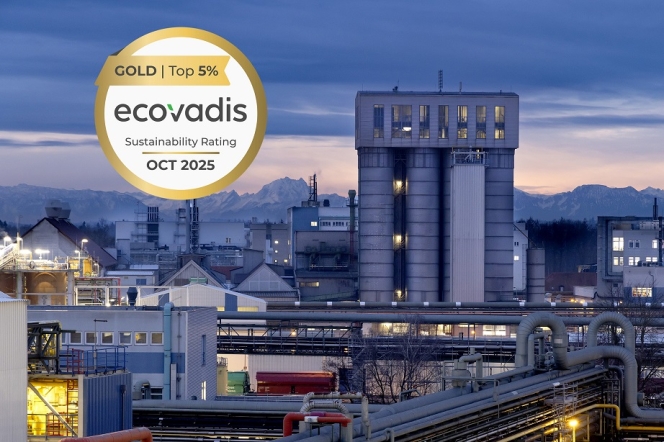
WACKER has earned the 2025 Gold Medal from the independent rating agency EcoVadis, marking its continued recognition for sustainable practices and responsible corporate governance. This distinction places the company within the top five percent of all businesses assessed by EcoVadis (over 1,000 companies globally). WACKER's overall score improved from 77 points (in 2024) to 79 points, driven largely by enhanced reporting and concrete actions focused on Scope 3 emissions and ethical standards.
The EcoVadis assessment measures the quality of a company’s sustainability management through a methodology grounded in international frameworks like the Global Reporting Initiative, the UN Global Compact and ISO 26000. Performance is scored from 0 to 100 across four core areas: environment, labour and human rights, ethics and sustainable procurement, using 21 specific indicators.
In line with its commitment, WACKER provides its EcoVadis evaluation to customers as a standardised and credible validation of its sustainability efforts. The company has also defined ambitious climate targets, aiming to halve its absolute greenhouse gas emissions by 2030 relative to 2020 levels. Progress is already evident, with a 30 percent reduction achieved as of 2024. Looking further ahead, WACKER strives to reach net-zero emissions across its operations by the year 2045.
Peter Gigler, Head of Corporate ESG, WACKER, said, “The result confirms our initiatives in many key areas. It provides our customers with invaluable proof.”
Craig Borman Appointed As Head Of OTR At BKT USA
- By TT News
- December 18, 2025
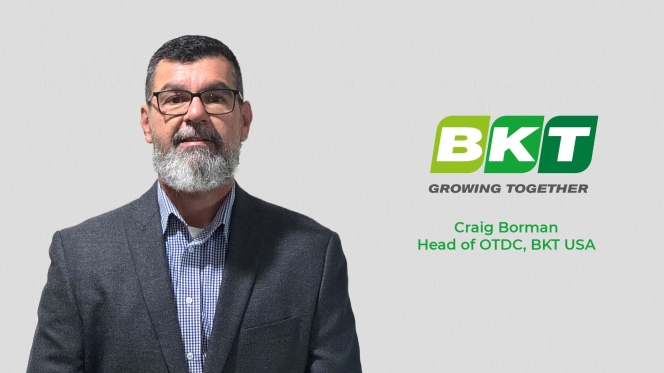
Balkrishna Industries Ltd (BKT Tires), a global leader in off-highway tyre manufacturing, has appointed Craig Borman as Head of OTR at BKT USA. The appointment is in line with BKT’s long-term strategy through 2030.
Borman brings with him 20 years of experience across off-road equipment, tyres and rubber tracks. He will play a key role in leading BKT USA's OTR team and expanding the company's presence in this market while increasing awareness of the value and dependability of BKT's range of products.
Borman said, “I’m extremely excited to join the BKT family and to build off the successes that this team has already achieved. I look forward to engaging with our partners, determining how we can accelerate our mutual growth and working towards achieving BKT’s vision of being a recognised leader in the OTR segment.”
Christian Kötz To Succeed Nikolai Setzer As Continental CEO In Planned Handover
- By TT News
- December 18, 2025
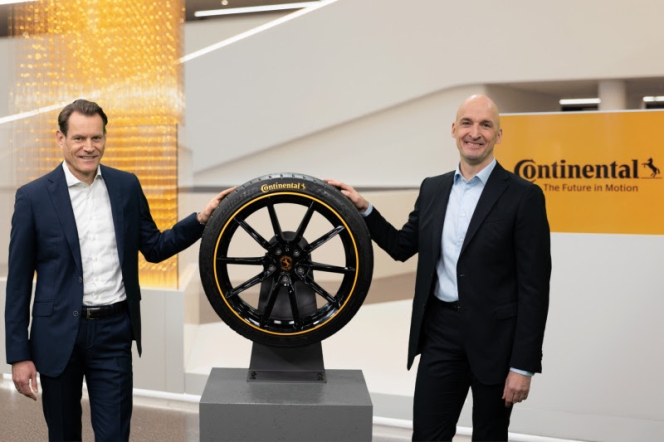
The Supervisory Board of Continental AG confirmed a significant leadership transition during its meeting on 17 December 2025. Christian Kötz will be appointed as the new Chairman of the Executive Board and Chief Executive Officer, effective 1 January 2026. He succeeds Nikolai Setzer, who will step down from the Executive Board on 31 December 2025. Setzer's departure follows more than 16 years as a board member, including the last five years in the CEO role, and occurs by mutual agreement as the company reaches a pivotal point in its strategic evolution.
This planned change in leadership aligns with the substantial progress Continental has made in its transformation into a pure-play tyre company. Major structural milestones have been achieved, including the spin-off of Aumovio and the signing of an agreement to sell the Original Equipment Solutions (OESL) business area. Regarding the planned 2026 sale of ContiTech, internal preparations are largely complete. The market outreach phase has concluded, and a structured sales process is scheduled to begin in January 2026, setting the stage for the final step in the corporate realignment.
Kötz’s extensive background within the tyre business, dating back to 1996, positions him to lead this final phase. A member of the Executive Board since 2019, his previous leadership roles within the Tires group sector included responsibility for the passenger car tyre replacement business in the EMEA region, the original equipment and commercial vehicle tyre business units and global research and development for passenger car tyres. His many years of trusted collaboration with Nikolai Setzer are expected to ensure continuity during the transition.
Kötz will lead an Executive Board comprising several key figures. Alongside him and Philip Nelles, who has headed the ContiTech group sector since 2021, are Roland Welzbacher and Ulrike Hintze. Welzbacher joined the board in August 2025 and assumed the role of Chief Financial Officer on 1 October 2025. Hintze was appointed to the board on 1 July 2025, serving as Chief Human Resources Officer and Director of Labour Relations. This board will be responsible for driving the tyre business forward, completing the corporate realignment and, following the sale of ContiTech, integrating the remaining group functions into the tyre organisation.
Wolfgang Reitzle, Chairman of Continental’s Supervisory Board, said, “Nikolai Setzer has been instrumental in shaping Continental, realigning the organisation and paving the way for three strong, independent companies. For this, he has the thanks of the entire Supervisory Board as well as my personal gratitude. With this handover, we are consolidating responsibility for the tyre business, the realignment and the remaining tasks of the group functions in one role. Christian Kötz is one of the most distinguished managers in the global tyre industry. With his extensive experience and passion for Continental, we firmly believe he is the right choice to lead the company successfully into the future.”
Setzer said, “In recent years, we have succeeded in transforming a diverse portfolio of businesses into three strong, independent champions. After 28 years at Continental, now is the right time for me to hand over responsibility to Christian Kötz. I’m extremely grateful for the journey we’ve all shared and proud of what we’ve all achieved together. I firmly believe that the tyre business, ContiTech, Aumovio and OESL have a promising future ahead.”
Kötz said, “I would like to thank the Supervisory Board for its trust and am excited about this new responsibility. Continental has been my professional home for three decades. Together with the Executive Board team and all colleagues throughout the company, we will complete the realignment and continue the success story of our tyre business.”







Comments (0)
ADD COMMENT